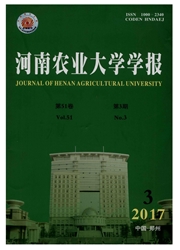

 中文摘要:
中文摘要:
以河南省和江苏省的典型区域为例,比较了地表水资源的分布特征评价中广泛使用的河网密度法和1种最新的基于仙农熵的水体空间分布多样性法,计算了各研究区及其分区域内的河网密度值和1km网格尺度下的水体空间分布多样性,并探索了两者之间的联系与异同。研究表明,样区内水体表面积与河流总长度之间存在一定程度的正相关;在评价湖泊、水库等大规模面状水体类型时,水体多样性的表现明显优于河网密度;当研究区面积相等时,河网密度值与水体空间分布多样性之间的联系视研究区内地表水资源性质而定,在湖泊稀缺地区,两者之间一般呈明显的正相关关系,判定系数R2达到0.5以上,在湖泊富集地区,两者之间一般呈明显的负相关关系,如苏州市达到0.9以上。
 英文摘要:
英文摘要:
Typical research areas of Henan and Jiangsu Province are selected for a correlative analysis between the traditional drainage density methodology and a new water body diversity methodology based on modified Shannon entropy. The correlative analysis is conducted to explore the difference and simi- larity between the above two factors after the drainage density and water body diversity in 1 km grid of each research area and subarea are calculated. The results show that there is a degree of positive rela- tionship between the surface water area and the total river length in the research areas. The water body diversity acts better than drainage density in the evaluation of surface water with large area such as lakes and reservoirs. When the study areas are equal, the relationship between drainage density and water body diversity depends on the characteristics of surface water of each research area, for instance, there is a positive relationship between them in the lake scarce regions with the coefficient of determi- nation (R^2) of more than 0.5 in Henan province but a negative relationship in the lake-rich regions with R^2 of more than 0.9 in Suzhou city.
 同期刊论文项目
同期刊论文项目
 同项目期刊论文
同项目期刊论文
 期刊信息
期刊信息
